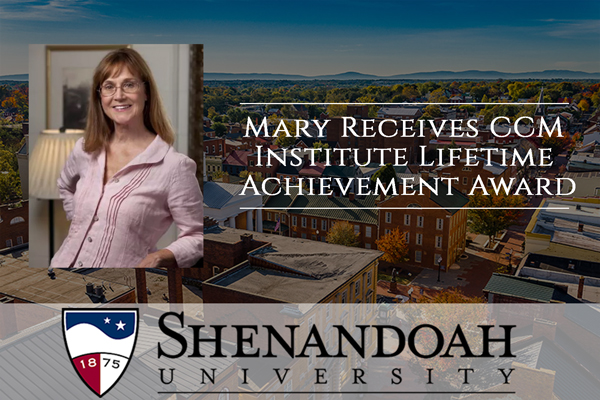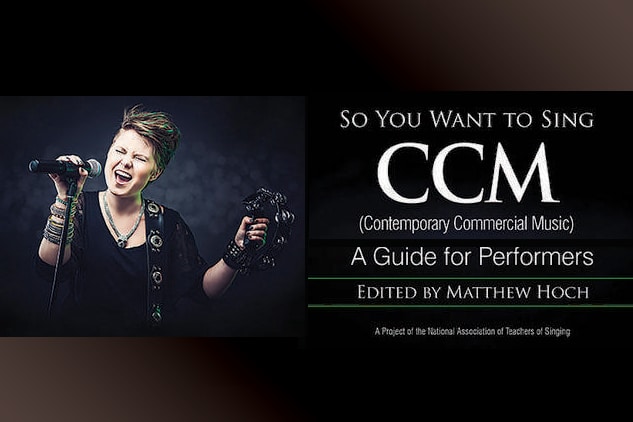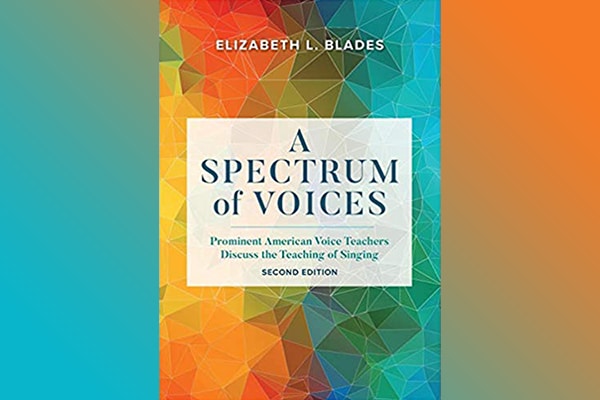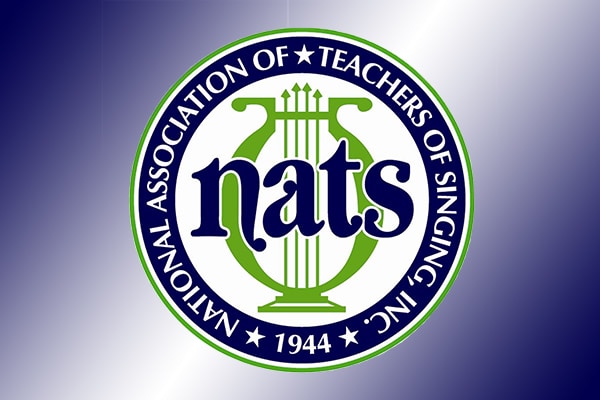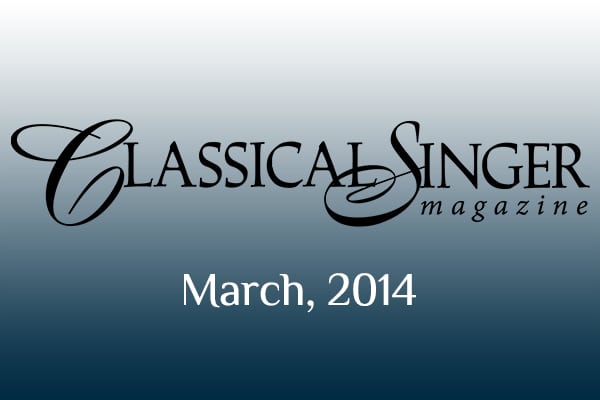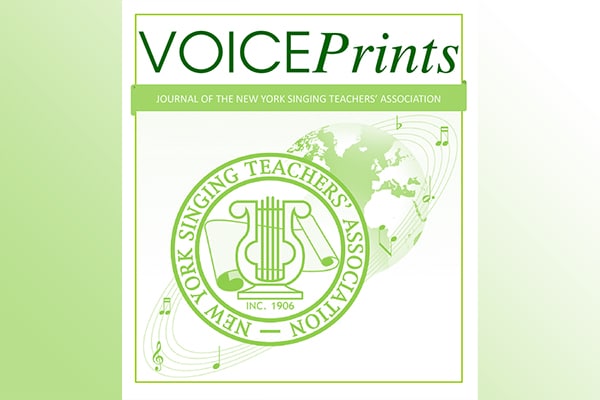As head of voice instruction for the BFA Musical Theatre Program at Penn State University, Mary Saunders-Barton has long been a proponent of healthy and effective vocal practices for a variety of styles of music. Now, as head of a new MFA in Voice Pedagogy for Musical Theatre and with her second Bel Canto Can Belto DVD forthcoming, she continues to help singers and teachers understand the pedagogy behind singing Contemporary Commercial Music (CCM).
As demand for CCM singing technique grows, classical voice teachers can find themselves scrambling for direction. There is plenty of information available about classical vocal pedagogy, but it seems there is much less available about CCM styles. Was this always the case?
Musical theatre was always—in New York City—just a fool’s paradise. You figured it out on your own, basically. The teacher didn’t know any more than you did; we just made the sounds. Some people maybe got in trouble with that, originally. Now I think we have enough groundwork and security to go forward. I feel very confident about it.
You don’t have to get rid of your other voice. This is an add-on, this awareness that you can use your voice in other ways. Originally, you went to college to learn how to sing classically. And if you went to college to sing musical theatre, you did it sort of on the sly with a teacher who was willing to teach you that. It’s not the same thing anymore.
Many musical theatre programs teach classical techniques as well as “belt.” Is that something you promote?
I love the idea of cross-training. Obviously, people in the bloom of a career on the Metropolitan stage—you’re not going to expect them to turn around and belt. But I’ve certainly taught opera singers and I haven’t found it to be a problem if they’re actually motivated to make these other sounds. A great many of them can make that shift and find it very exciting and liberating, and [it] doesn’t encroach on their voices at all.
Opera and musical theatre, to me, are the theatre forms of singing. Why would they be on separate planets? It doesn’t make sense.
What do you see as the primary difference, then, between classical and musical theatre vocalism?
Biggest difference: self-amplification. Everything in operatic and classical training is intended to be sung without a microphone. [That] makes a vast difference in terms of resonance and the way you work the voice. I think it’s valuable to train musical theatre singers in [classical technique] as well and to recognize the acoustic use of the voice, and then move them to musical theatre and still stay very resonant.
I know a lot of my colleagues are starting to teach with microphones. I’m not inclined to move in that direction at all because I don’t feel that you actually get a full sense of your voice if you’re getting that help over time.
Studies seem to indicate that from classical to belt technique, there are differences in the way we shape the resonant spaces as well as differences in what is happening at the laryngeal level. With your students, do you spend more time focusing on vowels and changes in the resonance or addressing what is occurring at the larynx?
I think probably my entire approach to teaching musical theatre is vowel based and resonance based as opposed to larynx based, even though what happens in the larynx is going to be reflected, obviously, in the sound that comes out of your mouth.
I consider a belt to be what occurs on an open vowel in male and female singers above the passaggio . . . finding the vowels that belt, which are “ah,” “uh,” “eh,” [like] if you “call out.” Then [finding] how those vowels close. These are all things that you would talk about in classical—[in] a slightly different way, but it’s the same thing. Those vowels close on “oo” and “ee.” So you have to learn to shape the closed vowels.
We spend a lot of time with girls and boys identifying those qualities and being able to shape them back and forth . . . . Obviously not every sound above that passaggio is going to be belted. So we just decide when the belt is going to happen, and that is, to me, an acoustic quality . . . . It’s where we would “call” because that’s where we’re going to make the most noise. Boys are going to make the most noise F-sharp to B-flat on an open vowel. Girls are going to make the most noise between F-sharp and C or F-sharp and B-flat.
So I would say vowels are predominant in my approach. And I use flexibility exercises to underscore the fact that you should be able to go from any of these qualities easily, even though you’re making laryngeal changes while you’re doing it.
Do you consider belt to be “mixed?”
I think, ideally, there’s always a balance. Most people at this point, who think belting exists at all or should ever happen in the voice, think that everything is mixed, but every voice has different ways of balancing. You have to just make sure that you get good, healthy function. But to me, a belt is an acoustic event that happens above the passaggio. In other words, I don’t belt in my low chest. A man in his modal voice—that’s just his modal voice. But where he reaches a point where he would turn that corner and add more treble (you know, the famous F, F-sharp, E) . . . musical theatre has other paths: falsetto is a viable option (which it’s not for opera); the mixed sound with a slightly higher larynx (I call it a speaking mix); then the belt; and then a classical mix, which is just lower larynx mixed sound—voix mixte.
So all boys in musical theatre, for the most part, have to have enough heft in the voice to carry sound with authority and they have to be able to get these high notes. Everybody’s singing high! Now, I don’t know if the market is going to change, but in response to what’s going on now, we have to train them to be able to mix up high or there’s just no work.
Would you say at least up to about A-flat or so for most musical theatre repertoire?
Oh, higher and higher. They’re going to C! It’s unbelievable what’s going on out there! Twenty years ago, you’d think it was amazing that a baritone could hit a G comfortably. They’re not baritones anymore. Period. They’re just singer boys. And the girls have to belt high, too. There’s just no end to that.
Our students are asked to sing real pop, not theatre pop [and] real rock, not theatre rock at their auditions. I teach in New York City too and I see what’s going on, and there’s so much of that. It’s high passaggio singing for everybody—way, way up there!
What is the difference between an uncovered belt and a high belt for female voices?
At the moment, girls don’t uncover or sing that open belt quality—Thoroughly Modern Millie, “Gimme Gimme”—past a D5. It just doesn’t seem physically possible. . . . There’s some play in the margins, but for the most part that seems to be it. The voice naturally turns at E-flat 5 and goes to, negatively you say, a “high scream,” but it is like a scream. That’s why everyone loves it so much. Like Wicked, “Defying Gravity”—everyone loves that. Or, not everyone. Some people still hate that sound. But it’s not going away. Well produced, it’s absolutely thrilling to hear. It’s just free and out there. And it’s a function of speech. It’s the way they would call “Help!” or “Fire!” or something like that in that high range.
It’s just so much a part of the music now that we have to figure out how it goes and try to get them healthy on it. That’s what I consider my job to be, not to say, “I don’t like that so I don’t want you doing it.”
That seems to be the focus of the MFA that you have started in Voice Pedagogy for Musical Theatre at Penn State. Tell us about that program.
It started in 2011. I recruit two students every other year in conjunction with a group of MFAs in the school of theatre at Penn State. It’s like a little musical theatre school within a school. We have musical directing, directing for the musical theatre stage and voice pedagogy all under one roof, which is really great. So far, I’m just thrilled with it.
The approach that I take is inclusive, not exclusive—that “Bel Canto Can Belto.” It’s a privilege to sing all of this music, including pop/rock, what we call Contemporary Commercial Music. Why not get them going as far as they can go? We don’t really put them in a Fach and say, “You’re going to be this person.” We just see how far they can go and how much they can stretch.
I feel it’s a second-career kind of grad program [for] someone who says, “I’ve performed; I love it; I want to give back.” Our focus is to develop teachers who have a wide range of understanding and tolerance for different styles and want to develop voices from the ground up.
What sort of resources do you use? Is there a specific textbook you incorporate?
I invite live human beings to come. I bring them especially when I teach my pedagogy series. Last year, for example, we brought in Sheri Sanders, an expert in rock-pop styles (author Rock the Audition). Lots of enrichment from the outside.
I just wrote the foreword to a new book, So You Want to Sing Musical Theatre by Karen Patton Hall, which is part of a new series of books published by Scarecrow Press under the auspices of the National Association of Teachers of Singing. They use lots of vocal examples and there’s going to be a component on the NATS website of audio and exercises. That’ll be great.
Dr. Wendy LeBorgne and her colleague Marci Rosenberg have just completed a book called The Vocal Athlete, which we all contributed exercises to that I think will be really useful.
We’ll catch up. But I just don’t want to be too quick to pin everything down because I feel like this is such an evolving art form. It’s better to come to agreements gradually as opposed to having a book that says, “This is the way we do it.”
These kids are making sounds—holy cow!—that you cannot believe and they are stronger and stronger. Our seniors right now are blowing my mind with how strong they are. They can sing for hours—every style imaginable, including classical. So I figure that’s my goal, that’s my dream—to have very strong people out there who can jump from American Idiot to Oklahoma!
Tenor Brian Manternach teaches voice at the University of Utah in the Musical Theatre Program. He holds degrees in vocal performance from Saint John’s University in Minnesota (BA), the University of Wisconsin-Milwaukee (MM), and the Indiana University Jacobs School of Music (DM).
